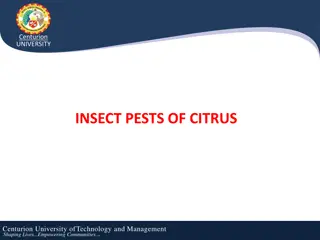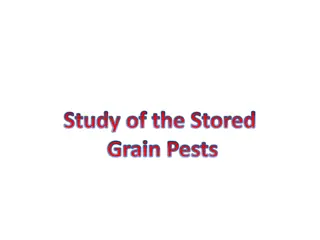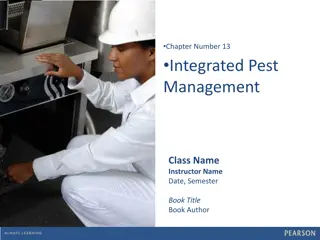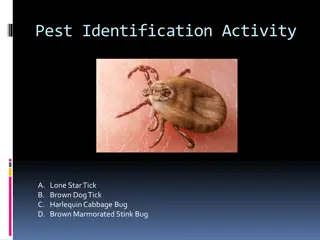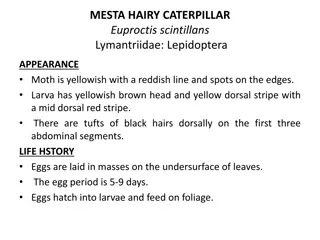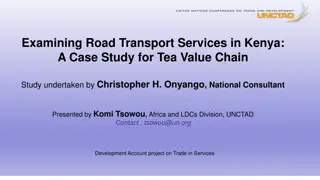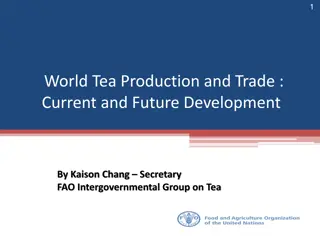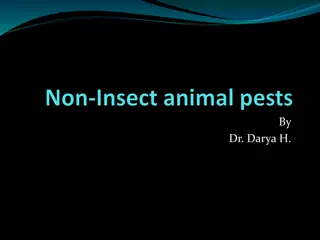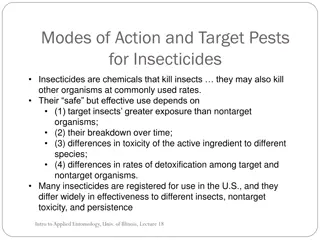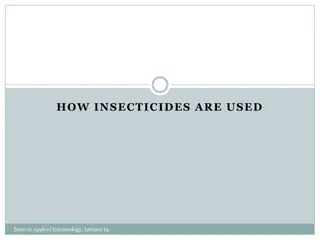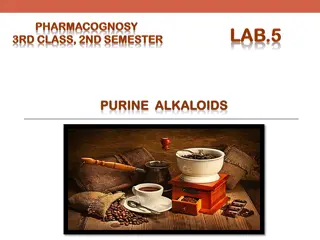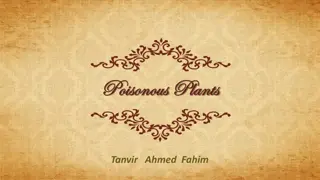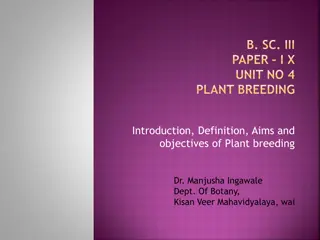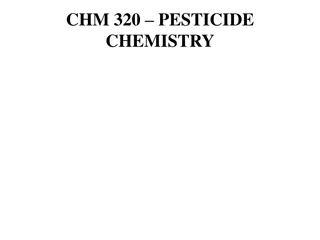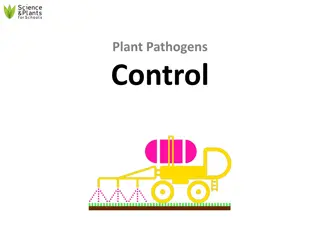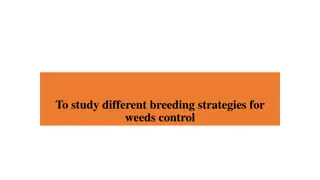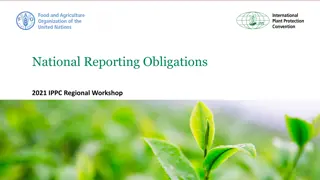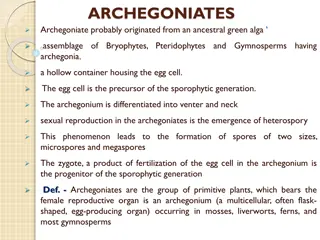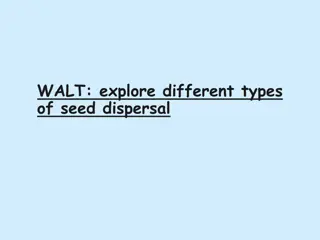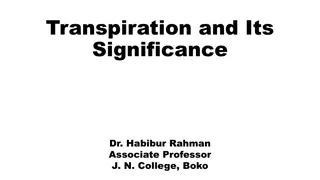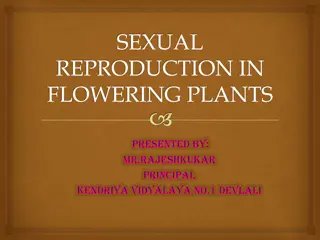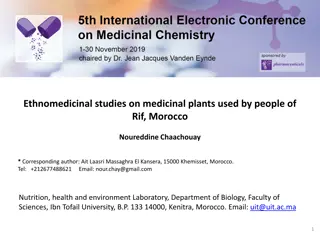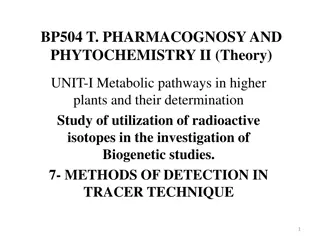Managing Pests of Tea Plants in India
Tea plantations in India face infestations from pests like the tea mosquito bug and thrips, which feed on sap and cause damage to leaves and shoots. Effective management strategies include manual removal, spraying with insecticides like malathion, and monitoring for early detection to protect tea crops from significant harm.
Download Presentation

Please find below an Image/Link to download the presentation.
The content on the website is provided AS IS for your information and personal use only. It may not be sold, licensed, or shared on other websites without obtaining consent from the author. Download presentation by click this link. If you encounter any issues during the download, it is possible that the publisher has removed the file from their server.
E N D
Presentation Transcript
Centurion UNIVERSITY PESTS OF TEA Centurion University ofTechnology and Management Shaping Lives...Empowering Communities...
TEA MOSQUITO BUG Helopeltis theivora Miridae: Hemiptera DISTRIBUTION It is distributed in India, Sri Lanka, Vietnam and Indonesia. H. antonii is predominant in South India whereas H. theivora is common in Eastern India. It also infests guava, grapevine, cashew, mahagony, neem, cacao, cinchona, pepper, tamarind, cinnamom, apple etc. APPEARANCE The female bug is orange across shoulders and the male is almost black.
LIFE HISTORY Soon after emergence, the adults mate and the female lays 500 elongated sausage shaped eggs within two days inserting in the tender shoots in groups of two or more and hairs from each egg project outside. The incubation period is 5-27 days. Nymphs complete their development in about two weeks after passing through five moults. The life -cycle is completed in about a month and in a single year there may be several generations. Adults pass the winter under hibernation
NATURE OF DAMAGE The nymphs and adults suck sap from tender buds, leaves and stem. While feeding, the toxic salvia is injected causing SYMPTOMS OF DAMAGE Brownish patches and curling of leaves. Ultimate drying of shoots MANAGEMENT Collection of nymphs and adults with hand nets early in the morning or in the evening and destroying them. Spraying the bushes with malathion 200 ml or endosulfan 400 ml in 200 litres of water per acre.
THRIPS Taeniothrips setiventris Scirtothrips dorsalis Thripidae: Thysanoptera This is a major pest in the Assam Hills. The adult is a yellowish-brown in colour with dark-brown abdomen. Pruned tea is the worst affected. Scirtothrips dorsalis, commonly occurs in the plains of North-East India. The life-cycle takes 13-18 days to complete during various months of the year; the peak period of incidence is in May. The damage is similar to that caused by T. setiventris.
Nymphs and adults live and feed inside the buds and the young leaves. The infested leaves become deformed and curled up and the shoots stunted. Spraying the bushes with malathion 200 ml or endosulfan 400 ml in 200 litres of water per acre is recommended.
TEA MITES Red spider mite: Oligonychus coffeae, Tetranychidae Purple mite: Calacarus carinatus, Eriophyidae Pink mite: Acaphylla theae, Eriophyidae Scarlet mite: Brevipalpus australis, Tenuipalpidae APPEARANCE O. coffeae is brick red in colour and roundish. NATURE OF DAMAGE The mite lives in colonies in a thin web on the upper surface of mature leaf and the damaged portion turns brown. The leaf becomes bronze, dry and crumpled in case of severe attack even young leaves may be affected. Apart from tea, it also infests coffee.
C. Carinatus The mite is dark purple to pink in colour with characteristic white ridges running along back. C. carinatus is widespread and severely infested fields present a bronze or coppery brown or smokey discoloration of leaves. It infests mostly the undersurface of mature leaves especially along the leaf margins and occasionally the upper surface and young leaves.
Acaphylla theae The mite is minute, not visible to naked eye, buff coloured and carrot shaped or top shaped. A. theae is the mot serious pest of tea on the Anamalasis as it attacks the flush. In the initial stages of attacks the leaf blade curls upwards and this is followed by crinkling of the leaf. The attacked leaf surface is thick and leathery whereas the under surface of leaf is glossy buff or brown in colour. It also infests coffee.
B. australis is orange red flattened obovate mite infests undersurface of mature leaves near petiole and along the margin. Infested leaves turn brownish. It also infests tea besides many other plants. Sulphur is not recommended as it taints tea.
MANAGEMENT Chemicals like ethion 1 ml/l, dicofol 5 ml/l, phosalone 2ml/l are effective against tea mites. The EPA tolerance level is 8 PPM in or on dried tea for p hosalone



